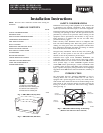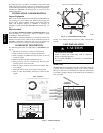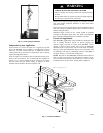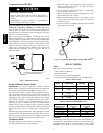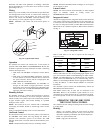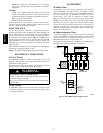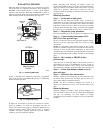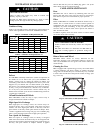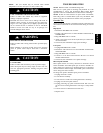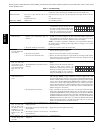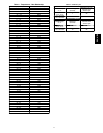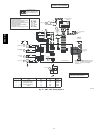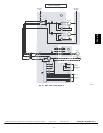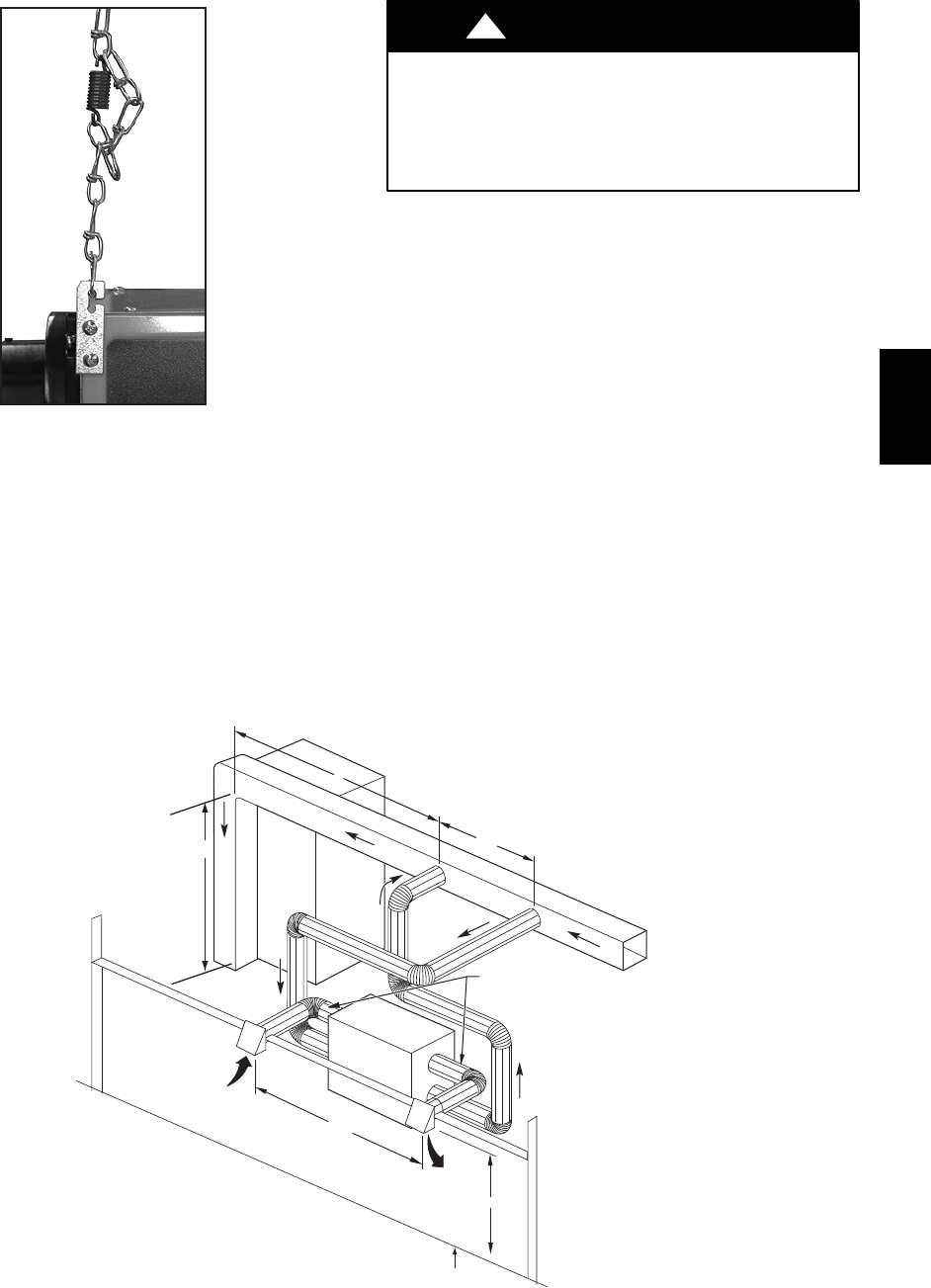
3
A05331
Fig. 6 -- Chain Spring Installation
Independent System Application
In the absence of a forced--air system and a typical duct system
layout, the ERV/HRV can be applied as an independent or stand
alone unit. To ensure comfort, this type of application involves
running both fresh--air and return--air registers (or stale--air pickup
registers) throughout the home.
Fresh--air registers are normally located in bedrooms, dining room,
living room, and basement. It is recommended that registers be
placed 6 to 12” (152 to 305mm) from the ceiling on an interior
wall and airflow directed toward ceiling. If registers are floor
installed, airflow should be directed toward the wall.
CARBON MONOXIDE POISONING HAZARD
Failure to follow this warning could result in personal injury
or death.
Do not install return--air registers (or stale-- air pickup registers)
in same room as gas furnace or water heater.
!
WARNING
Return--air (or stale--air pickup registers) are normally located to
draw from kitchen, bathroom, basement, or other rooms where
stale--air can exist.
Proper size and type of registers must be used to minimize pressure
drop. The velocity of airflow through register should not be above
400 ft (122m) per minute.
Maximum length of duct for the system should be designed
according to the highest speed of the unit. Refer to specifications
listed in unit Product Data Digest for ventilation cap acities.
Forced--Air Application
Most ERV/HRV applications will be installed in conjunction with
new or existing forced--air system. To operate properly, the
fresh --air supply and stale-- air return from ERV/HRV connect
directly to return--air duct system. This is how the ERV/HRV
distributes fresh air and removes stale air from inside of building
(See Fig. 7). For these installations, furnace or fan coil b lower must
be interlocked and operate continuously whenever ERV/HRV is
energized. See Fig. 17 for interlock wiring detail.
NOTE: The fresh air from ERV/HRV is introduced into return--air
duct at a point no less than 6 ft (1.8m) upstream of furnace or fan
coil. This connection should be direct (See Fig. 7). This is to allow
incoming fresh--air to mix before entering indoor equipment.
INSULATED DUCT CONNECTING
FRESH AIR & EXHAUST TO
OUTSIDE
A
3 ft / .9 m MIN
FURNACE
REAR
INLET HOOD
6 ft / 1.8 m
EXHAUST HOOD
18" / 457 mm
ERV
NOTE: Supply & exhaust ducts have
internal balancing dampers
that must be adjusted.
GROUND LEVEL
B
NOTE: A + B = Not less than 10 ft / 3 m
A07282
Fig. 7 -- Exhaust Ventilation
ERV / HRV



